Navaratri Festival
Mainly, two Navaratri fall in a year:
- Vasanta Navaratri: the second most celebrated, named after Vasanta which means spring. It is observed the lunar month of Chaitra (post-winter, March–April). In many regions the festival falls after spring harvest, and in others during harvest.
- Sharada Navaratri: the most celebrated of the four Navaratri, named after Sharada which means autumn. It is observed the lunar month of Ashvin (post-monsoon, September–October). In many regions, the festival falls after the autumn harvest, and in others during harvest.
Day 1: The first day of Navratri is dedicated to Goddess Shailputri, the first form of the Goddess Durga. In this form, people worship Goddess Shailputri as a girl child and the daughter of a mountain. The colour of the first day is Royal Blue. Therefore, devotees are expected to wear royal blue-coloured clothes and offer ghee as bhog to the goddess. You can prepare dishes like aloo ka halwa, Rajgira ka ladoo or Sabudana khichdi for bhog.
Day 2: On the second day of Navratri, people worship Goddess Brahmacharini. Yellow is known to be associated with the second day of Navratri and devotees offer sugar as bhog to the Goddess Brahmacharini. You can offer Singhare Atte ka halwa or kacche kele ki barfi as the bhog to the goddess.
Day 3: The third day of Navratri is dedicated to the Goddess Chandraghanta, the goddess of peace and serenity. It is believed that praying this form of shakti could cure all your problems in life. The colour of this day is Green and devotees offer milk to please the goddess. You can cook elaborate dishes like Sabudana kheer or makhana kheer (with dry fruits) for the bhog.
Day 4: Devotees on the fourth day of the festivity worship Goddess Kushmanda. It is believed that observing fast on this day of Navratri could cure all the pain and diseases. Grey colour is associated with the fourth day of Navratri and devotees offer Kuttu ke Atte ka malpua in the form of bhog to the goddess.
Day 5: The fifth day is dedicated to the Goddess Skandamata. Devotees are expected to wear Orange-coloured clothes on Panchami and offer fruits, especially banana, as bhog to the goddess. The best food options include Kache Kele Ki Barfi, banana chips (with rock salt), banana walnut lassi and Kele ki Sabzi.
Day 6: It is the Goddess Katyayani who is worshipped on the sixth day of Navratri. Devotees wear the colour White and offer honey as bhog to please the goddess. You can go a little creative and make your own vrat-friendly honey chilli potatoes for snacks.
Day 7: Seventh day of Navratri is dedicated to the Goddess Kaalratri. Devotees wear Red-coloured clothes and offer jaggery as bhog. You can add jaggery to your vrat-friendly Sabudana kheer, Kuttu ke Atte ka halwa and even in tea.
Day 8: On the eighth day, people worship Goddess Mahagauri. Worshipping this avatar of goddess Durga is said to mitigate all the sins of one's life. Sky Blue is associated with the eighth day of Navratri and bhog made of coconut is offered to the goddess. You can make coconut barfi as prasad. Barfi are the best to offer on the eighth day.
Day 9: Ninth day, or Navmi, is the last day of Navratri and is dedicated to the Goddess Siddhidatri. Devotees on this day, break their nine-day fast and worship all the nine forms of Goddess Durga. Dishes like halwa, puri and chana are offered to the goddesses as bhog. The colour for the ninth day is Pink.
Foods to be consumed during Navratri –(this information is taken from Wikipedia)
Grains & Flours – Kuttu ka Atta (Buckwheat Flour), Singhade ka Atta (Water Chestnut flour), Rajgira/Chaulai ka Atta (Amaranth flour), Sama ke Chawal(Barnyard Millet), Sama ka Atta (Barnyard Millet flour) and Sabudana (Tapioca Pearls). Phool Makhana (Fox nuts) are commonly used too.
Nuts – All kind of nuts can be consumed during Fasting. It includes Baadam (Almonds), Kaaju (Cashews), Mungfali (Peanuts), Akhrot (Walnuts), Magaj ke Beej (Melon seeds), Chilgoza (Pine Nuts), Kishmish (Raisins), Pista (Pistachio).
Oils – Ghee, & Peanut Oil are commonly used oils.
Spices – Sendha Namak (Rock salt), Jeera (Cumin seeds), Jeera Powder (Cumin seeds powder), Kali Mirch powder (Black pepper powder), Elaichi Chhoti (Green Cardamom), Cloves(laung).
Fresh Herbs & Fresh Seasoning Agents – Ginger root, Green Chillies, Coriander Leaves (Cilantro), Lemon juice are commonly used.
Fruits – Fruits of all kinds are allowed to be eaten. Apples, Grapes, Bananas, Papaya, Pears, Peaches, Berries, etc. any seasonal fruit can be consumed.
Milk & Dairy Products – Milk, Yogurt, Paneer (Cottage cheese), Fresh Cream, Butter, Malai, Khoya/ Mawa are commonly consumed milk items during fasting season.
Sugars – Raw sugar, Jaggery, Honey, regular sugar are consumed commonly.
Vegetables – Only a limited variety of vegetables are allowed during Navratris. Aloo (Potato), Arbi (colacasia), Yam (Jimikand), Kacha Kela (Raw Banana), Kacha Papeeta (Raw Papaya), Lauki (Bottle Gourd), Kaddu/Kashifal (Pumpkin) are most commonly consumed vegetables.
Miscellaneous – Coconut powder or grated coconut and coconut milk.
Salt - Sendha Namak
Foods cant be consumed during Navratri:
Salt - Devotees are refrained from using the regular table salt while fasting for Chaitra Navratri.
Cooking oils - The regular cooking oils like mustard oil and refined oil, etc are not consumed during the fasting process.
Certain vegetables - Onion and garlics are also not consumed during Navratris as it considered to be Tamsic food.
Flours - The regular all purpose flour/maida is not at all allowed during Navratri.
Grains - A lot of common food grains Such as white rice, legumes, lentils and rava are also not consumed during Navratri.
Spices - Plenty of spices are said to induce heat in the body and therefore, is not consumed during Navratri. Turmeric, asafoetida, garam masala, coriander powder, mustard seeds, fenugreek seeds are usually avoided.
Non-veg- Non-veg is a strict no during Navratri.
Aerated drinks and alcohol - Sodas and alcohols are also not consumed during these 9 days of fasting. People usually avoid drinking any aerated drinks which are available in the market.
Smoking and consumption of tobacco are also not allowed during fasting.
Other foods: You also need to avoid certain foods like chia seeds and oats which have become a staple these days among the millennials. Also, mushrooms, soya beans, leeks, etc are also not consumed during Navratri.
Here are some healthy fasting habits to adopt during Navratri fast:
- This fasting season, dehydration is not something you want to experience. To ensure proper body functioning and ensure that you don't drain yourself in the festivities, hydration levels should always be maintained. Drinking plenty of water can also detox you in the business of festivities and all those food indulgences! You can also think about including liquids like coconut water, milk and fresh fruit juices which are not just fast-friendly but also recharge you.
- Try to moderate your eating habits and complement your diet with fresh fruits and veggies as well. Greasy, oily food can make you feel bloated as well. A lot of sweets available in the market are made with refined or processed sugar which are definitely unhealthy and something you should avoid as much as you can as it can make you prone to a lot of health problems. Instead, what you should do is make sweets at home and try to choose healthier alternatives to sugar like sugarcane and jaggery (gud).
- Fasting means that you feel hungry at odd times. Just when you feel the need to grab the packet of chips, we suggest you keep healthy snacks like makhanas handy! Foxnuts are extremely healthy and rich in vitamins and iron content. You can also make something like sweet potato fries, roast nuts which won't prove costly on your waistline or cholesterol levels. Drinking water at regular intervals can also cut down your cravings.
- During the Navratra, when you have a constricted eating time, it is essential you pick food items which are rich in fiber and take longer to digest, ultimately helping you stay fuller for a longer duration. Good vrat-friendly fibrous options include Samak ka atta, Rajgir, Singhara, Pumpkin, and Colocasia (Arbi).
- During any fasting season, the body is undergoing detox and it needs plenty of rest. Hence, make sure you sleep for 7-8 hours every day. Try to relax and go for some mindful meditative exercise to completely detoxify your body.
- During these nine days, you are likely to stay full with meal prepping, attending events and fasting. However, remember that the body is low on energy so try not to exert and put excessive pressure on your body. Keep snacking on something from time to time and rest when you can.
नवरात्रि एक हिंदू त्योहार है जो नौ रातों (और दस दिनों) तक चलता है और हर साल शरद ऋतु में मनाया जाता है। इस वर्ष 2020, यह 17 अक्टूबर से शुरू होगा और 25 अक्टूबर को समाप्त होगा । देशभर मैं नवरात्री अलग-अलग तरीके से मनाई जाती है। नवरात्री में हमें भिन -भिन प्रकार के पंडाल देखने को मिलते हैं खासतौर पे बंगाल में।भारत के कई राज्यों मैं नौ दिनों तक रामलीला होती है और दशवे दिन (विजयादशमी या दशहरा) रावण दहन करके नवरारत्री की सम्पाती की जाती हैं।नवरात्री के त्योहार के बाद ,रौशनी का त्योहार दीपवाली की त्यारी शुरू कर दी जाती हैं जिसे विजयदशमी या दशहरा के बीस दिन बाद मनाया जाता है।
मुख्य रूप से एक वर्ष में दो नवरात्रि पड़ते हैं:
वसंत नवरात्रि: दूसरा सबसे प्रसिद्ध, जिसका नाम वसंत का अर्थ वसंत है। यह चैत्र (अप्रैल के बाद, मार्च-अप्रैल) के चंद्र माह में मनाया जाता है। कई क्षेत्रों में त्योहार वसंत की फसल के बाद, और दूसरों की फसल के दौरान आते हैं।
शारदा नवरात्रि: चार नवरात्रों में सबसे अधिक मनाया जाने वाला, जिसका नाम शारदा है जिसका अर्थ है शरद। यह अश्विन के चंद्र महीने (मानसून के बाद, सितंबर-अक्टूबर) में मनाया जाता है। कई क्षेत्रों में, त्योहार शरद ऋतु की फसल के बाद, और दूसरों की फसल के दौरान गिरता है।
यहां नौ अलग-अलग खाद्य पदार्थों और रंगों की सूची दी गई है जो उत्सव के प्रत्येक दिन के लिए समर्पित हैं।
दिन 1: नवरात्रि का पहला दिन देवी दुर्गा के पहले रूप देवी शैलपुत्री को समर्पित है। इस रूप में, लोग देवी शैलपुत्री को एक बालिका और एक पर्वत की बेटी के रूप में पूजते हैं। पहले दिन का रंग रॉयल ब्लू है। इसलिए, भक्तों को शाही नीले रंग के कपड़े पहनने और देवी को भोग के रूप में घी चढ़ाने की उम्मीद है। आप भोग के लिए आलू का हलवा, राजगिरा का लड्डू या साबूदाना खिचड़ी जैसे व्यंजन तैयार कर सकते हैं।
दिन 2: नवरात्रि के दूसरे दिन, लोग देवी ब्रह्मचारिणी की पूजा करते हैं। पीला नवरात्रि के दूसरे दिन से जुड़ा हुआ माना जाता है और भक्त देवी ब्रह्मचारिणी को भोग के रूप में चीनी चढ़ाते हैं। आप देवी को भोग के रूप में सिंघारे अटे का हलवा या केच कीले की बर्फी भेंट कर सकते हैं।
दिन 3: नवरात्रि का तीसरा दिन देवी चंद्रघंटा को समर्पित है, जो शांति और शांति की देवी हैं। ऐसा माना जाता है कि इस प्रकार की शक्ती की प्रार्थना करने से जीवन में आने वाली सभी समस्याएं दूर हो सकती हैं। इस दिन का रंग हरा होता है और भक्त देवी को प्रसन्न करने के लिए दूध चढ़ाते हैं। आप भोग के लिए साबूदाना खीर या मखाना खीर (सूखे मेवे के साथ) जैसे विस्तृत व्यंजन बना सकते हैं।
दिन 4: उत्सव के चौथे दिन भक्त देवी कूष्मांडा की पूजा करते हैं। यह माना जाता है कि नवरात्रि के इस दिन उपवास रखने से सभी दर्द और बीमारियां ठीक हो सकती हैं। ग्रे रंग नवरात्रि के चौथे दिन के साथ जुड़ा हुआ है और भक्त देवी को भोग के रूप में कुट्टू के अटे का मालपुआ चढ़ाते हैं।
दिन 5: पाँचवाँ दिन देवी स्कंदमाता को समर्पित है। भक्तों से अपेक्षा की जाती है कि वे पंचमी पर नारंगी रंग के कपड़े पहनें और फल खासतौर पर केले को देवी को भोग के रूप में अर्पित करें। भोजन के सर्वोत्तम विकल्पों में केच केल की बर्फी, केले के चिप्स (सेंधा नमक के साथ), केला अखरोट की लस्सी और केले की सब्जी शामिल हैं।
दिन 6: यह देवी कात्यायनी हैं जिनकी पूजा नवरात्रि के छठे दिन की जाती है। भक्त रंग सफेद पहनते हैं और देवी को प्रसन्न करने के लिए भोग के रूप में शहद चढ़ाते हैं। आप थोड़ा रचनात्मक जा सकते हैं और स्नैक्स के लिए अपना व्रत-अनुकूल हनी चिल्ली पोटैटो भी बना सकते हैं.
दिन 7: नवरात्रि का सातवां दिन देवी कालरात्रि को समर्पित है। भक्त लाल रंग के कपड़े पहनते हैं और भोग के रूप में गुड़ चढ़ाते हैं। आप अपने व्रत के अनुकूल साबूदाना की खीर, कुट्टू के आटे की हलवा और यहाँ तक कि चाय में भी गुड़ मिला सकते हैं।
दिन 8: आठवें दिन, लोग देवी महागौरी की पूजा करते हैं। कहा जाता है कि मां दुर्गा के इस अवतार की पूजा करने से व्यक्ति के जीवन के सभी पाप कम हो जाते हैं। स्काई ब्लू नवरात्रि के आठवें दिन से संबंधित है और देवी को नारियल का भोग चढ़ाया जाता है। आप नारियल की बर्फी को प्रसाद के रूप में बना सकते हैं। आठवें दिन बर्फी सबसे अच्छी होती है।
दिन 9: नौवें दिन, या नवमी, नवरात्रि का अंतिम दिन है और देवी सिद्धिदात्री को समर्पित है। इस दिन भक्त अपने नौ दिन के उपवास को तोड़ते हैं और देवी दुर्गा के सभी नौ रूपों की पूजा करते हैं। देवी को भोग के रूप में हलवा, पूड़ी और चना जैसे व्यंजन चढ़ाए जाते हैं। नौवें दिन का रंग गुलाबी है।
नवरात्रि के दौरान सेवन किए जाने वाले खाद्य पदार्थ - (यह जानकारी विकिपीडिया से ली गई है)
अनाज और फूल - कुट्टू का अत्ता (बकेवर का आटा), सिंघाड़े का अत्ता (पानी का आटा), राजगिरा / चौलाई का अट्टा (अमरनाथ का आटा), सामा का चवाल (बरनीट का बाजरा), सामा का अत्ता (बरनार्ड मिलेट का आटा) और साबूदाना। टैपिओका मोती)। आमतौर पर फूल मखाना (फॉक्स नट्स) का इस्तेमाल किया जाता है।
नट्स - उपवास के दौरान सभी तरह के नट्स का सेवन किया जा सकता है। इसमें बादाम, काजू , मूंगफली, अखरोट, मगज के बीज (खरबूजे के बीज), चिलगोजा (पाइन नट्स, किशमिश, पिस्ता शामिल हैं।
तेल - घी, और मूंगफली तेल आमतौर पर इस्तेमाल किए जाने वाले तेल हैं।
मसाले - सेंधा नमक , जीरा, जीरा पाउडर , काली मिर्च पाउडर , इलाइची छोटी (हरी इलायची), लौंग ।
ताजा जड़ी बूटी और ताजा मसाला एजेंट - अदरक की जड़, हरी मिर्च, धनिया पत्ती (Cilantro), नींबू का रस आमतौर पर उपयोग किया जाता है।
फल - सभी प्रकार के फल खाने की अनुमति है। सेब, अंगूर, केला, पपीता, नाशपाती, आड़ू, जामुन आदि किसी भी मौसमी फल का सेवन किया जा सकता है।
दूध और डेयरी उत्पाद - दूध, दही, पनीर (कॉटेज पनीर), ताजी क्रीम, मक्खन, मलाई, खोआ / मावा आम तौर पर उपवास के मौसम में दूध की वस्तुओं का सेवन किया जाता है।
शक्कर - कच्ची चीनी, गुड़, शहद, नियमित रूप से चीनी का सेवन किया जाता है।
सब्जियां - नवरात्र के दौरान केवल सीमित किस्म की सब्जियों की अनुमति है। आलू , अरबी (कोलाकेसिया), यम (जिमिकंद), कच्चा केला, कच्चा पपीता, लौकी, काशीफल (कद्दू) सबसे अधिक खपत वाली सब्जियाँ हैं।
विविध - नारियल पाउडर या कसा हुआ नारियल और नारियल का दूध।
नवरात्रि के दौरान खाद्य पदार्थों का सेवन नहीं करना चाहिए:
नमक - भक्त चैत्र नवरात्रि के उपवास करते समय नियमित टेबल नमक का उपयोग करने से बचते हैं।
कुकिंग ऑयल - नियमित रूप से खाना पकाने वाले तेल जैसे सरसों का तेल और रिफाइंड तेल आदि का सेवन उपवास प्रक्रिया के दौरान नहीं किया जाता है।
कुछ सब्जियां - प्याज और लहसुन भी नवरात्रि के दौरान नहीं खाया जाता क्योंकि इसे तामसिक भोजन माना जाता है।
फ़्लोउर्स - नियमित रूप से सभी आटे / मैदा नवरात्रि के दौरान अनुमति नहीं है।
अनाज - बहुत से सामान्य अनाज जैसे कि सफेद चावल, फलियां, दाल और रवा का भी नवरात्रि के दौरान सेवन नहीं किया जाता है।
मसाले - बहुत सारे मसाले शरीर में गर्मी पैदा करते हैं और इसलिए, नवरात्रि के दौरान इसका सेवन नहीं किया जाता है जैसे की हल्दी, हींग, गरम मसाला, धनिया पाउडर, सरसों के बीज, मेथी के बीज।
नॉनवेज- नॉन वेज नवरात्रि के दौरान सख्त मना होता हैं।
शराब - इन 9 दिनों के उपवास के दौरान सोडा और अल्कोहल का भी सेवन नहीं किया जाता है। लोग आमतौर पर किसी भी वातित पेय को पीने से बचते हैं जो बाजार में उपलब्ध हैं।
उपवास के दौरान धूम्रपान और तंबाकू के सेवन की भी अनुमति नहीं है।
अन्य खाद्य पदार्थ: आपको चिया सीड्स और ओट्स जैसे कुछ खाद्य पदार्थों से भी बचने की जरूरत है जो इन दिनों सहस्राब्दियों के बीच एक प्रधान बन गए हैं। साथ ही, मशरूम, सोयाबीन, लीक आदि का भी नवरात्रि के दौरान सेवन नहीं किया जाता है।
नवरात्रि के व्रत के दौरान अपनाये कुछ स्वस्थ आदतें
- यह उपवास का मौसम, निर्जलीकरण कुछ ऐसा नहीं है जिसे आप अनुभव करना चाहते हैं। शरीर के समुचित कार्य को सुनिश्चित करने और यह सुनिश्चित करने के लिए कि आप अपने आप को उत्सव में नहीं खोते हैं, जलयोजन स्तर हमेशा बनाए रखा जाना चाहिए। खूब पानी पीना भी आपको उत्सव और उन सभी खाद्य पदार्थों के व्यापार में डिटॉक्स कर सकता है! आप नारियल के पानी, दूध और ताजे फलों के रस जैसे तरल पदार्थों के बारे में भी सोच सकते हैं, जो न केवल तेजी से अनुकूल हैं, बल्कि आपको रिचार्ज भी करते हैं।
- अपने खाने की आदतों को मध्यम करने की कोशिश करें और अपने आहार को ताजा फल और सब्जियों के साथ पूरक करें। चिकना, तैलीय भोजन आपको फूला हुआ भी महसूस करा सकता है। बाजार में उपलब्ध बहुत सारी मिठाइयाँ परिष्कृत या प्रसंस्कृत चीनी के साथ बनाई जाती हैं जो निश्चित रूप से अस्वास्थ्यकर होती हैं और कुछ ऐसी चीज़ों से आपको जितना बचना चाहिए उतना ही इससे आपको कई स्वास्थ्य समस्याओं का सामना करना पड़ सकता है। इसके बजाय, आपको जो करना चाहिए, वह घर पर मिठाइयाँ बनाना और चीनी और गुड़ (गुड़) जैसे चीनी के लिए स्वस्थ विकल्प चुनने की कोशिश करना है।
- उपवास का मतलब है कि आपको अजीब समय पर भूख लगती है। जब आप चिप्स के पैकेट को हथियाने की जरूरत महसूस करते हैं, तो हम आपको मखाना जैसे हेल्दी स्नैक्स रखने की सलाह देते हैं! फॉक्सनट्स बेहद स्वस्थ और विटामिन और लौह तत्व से भरपूर होते हैं। आप शकरकंद फ्राई, रोस्ट नट्स जैसी कुछ चीजें भी बना सकते हैं जो आपके कमर या कोलेस्ट्रॉल के स्तर पर महंगा साबित नहीं होगा।
- नवरात्र के दौरान, जब आपके पास खाने का समय होता है, तो जरूरी है कि आप उन खाद्य पदार्थों को चुनें, जो फाइबर से भरपूर हों और पचने में अधिक समय लेते हों, अंततः आपको लंबी अवधि के लिए पूरी तरह से रहने में मदद करते हैं। अच्छे व्रत के अनुकूल रेशेदार विकल्पों में समक का अत्ता, राजगीर, सिंघारा, कद्दू, और कोलोसैसिया (Arbi) शामिल हैं।
- किसी भी उपवास के मौसम के दौरान, शरीर डिटॉक्स से गुजर रहा है और इसे आराम की बहुत आवश्यकता है। इसलिए, सुनिश्चित करें कि आप हर दिन 7-8 घंटे सोते हैं। आराम करने और कुछ के लिए जाने की कोशिश करें
Healthy food recipes you can consumed during Navratri:
- Roasted Makhana
- Makhane ki kheer
- Roasted Peanut
- Sabudana Khichdi
- Sabudana ki kheer
- Rajgira ki kheer
- Chatpati Fruit chat
- Kesar Lassi
- Banana And Walnut Lassi
- Kaccha kele ki tikki
- Banana Ka Halwa
- Sweet potato Tikki
- Sweet potato halwa
- Samak ki kichdi
- Samak rice tikki
- Samak rice idlli
- Samak rice Dosa
- Samak ki kheer
- Aloo ki tikki
- Aloo panner ki tikki
- Fried aloo chaat
- Badam milk
- Aloo halwa
- Lauki kheer
- Dry fruits milk shake
- Pumpkin halwa
- Paneer kheer
- Apple Kheer
- Apple halwa
- Singhada Halwa
- Kuttu ka halwa
- Singhare ki puri
- Kuttu ki puri
- Rajgira ki puri
- Vrat ke dahi aloo
- Vrat ke arbi sabji
- Rajgira ki kadhi
- Sabudana ki tikii or vada
- Sabudana chivda
- Banana Chips
- Arbi ki tikki
- Potato chips
- Kuttu ka pakoda
- French fries
- Palhari chutney
- Cucumber raita
- Papaya halwa
- Badam ke ladoo
- Dry fruits ladoo
- Makhana cutlet


































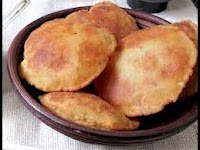











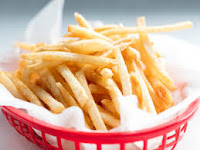





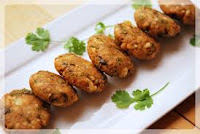
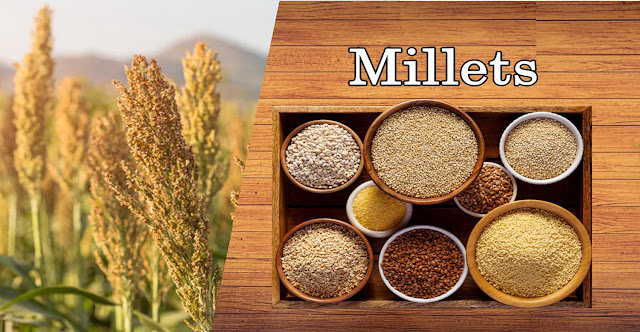
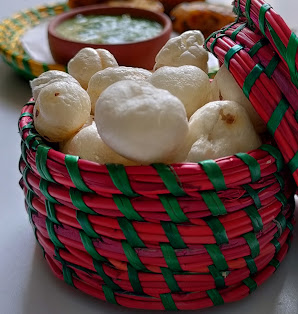

Comments
Post a Comment
Comments may be moderated. If you don't see your comment, please be patient. It may be posted soon. Do not post your comment a second time. Thank you.
shilpiKitchen.com